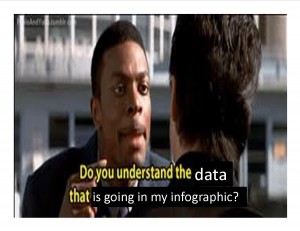This week’s discussion has been about understanding the data you have gathered to report it to the audience. The last few weeks have built around the look and feel of visualizations but what are they really telling us? Is it possible that the data can be faulty in in what is displayed. There are a myriad of questions that can pop up especially as final projects arrive. Freelance Journalist Michael Blastland has written a few tips for understanding data. One of his first tips is not to understand the data. In other words you should let the information come to you easily rather than forcing your own comprehension. Blastland gives the example of saying that if someone reads the statement “drinking is up” one could assume it was apart of the recession or if they read the opposite that drinking was down it could be assumed that people are broke. He said that no matter how you read the statement it will always turn out negative.
For my final Project I would like to possibly monitor either drinking or NBA points around this time. Reason being is that both sets of numbers seem are very active during Spring for their own respective reasons. Spring Break is approaching and the weather is getting warmer so people will be hitting the beaches more or doing more outdoor activities such as BBQing or anything where you will see alchoholoic bevarages. As for the NBA, scoring by individual players may rise or fall since it is around the time forthe postseason to begin and many teams are positioning themselves to be placed into
1. What skills are essential in understanding data before making it into a story?
2. What subjects can you have legitimate reports of data on besides crime?
3. How can an infographic spawn a story of its own?
4. How much of an affect does sample size carry over into the accuracy of an infographic?
5. Blastland says do not force understanding of the data. Is

